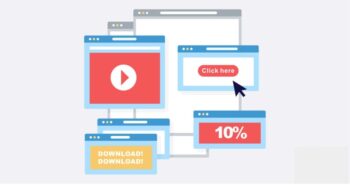When talking about search engine optimization, the first thing that will come to people’s minds is keywords. It is essential for the SEO campaign to have a keyword to use, be it in the content or even in the URL Optimization. URLs, as a matter of fact, require the presence of the keyword in order to let visitors know more about your website.
Must read: What is SEO and SEO Optimizing a Website
The structure of the link must be optimized URL example as much as possible. After all, making sure that the link has the proper structure can improve the results of your SEO campaign. It would be beneficial to remember some best practices for proper optimization of URLs 01 when one wants to have better SEO results.
Effective URL optimization offers many benefits: SEO-friendly URL affect your site’s ranking in search results. That’s amke a User-friendly web navigation.
Take note of the words used in the URL Optimization.
The most important element to have in the link is the keyword, of course. Having the keyword in the URL Optimization can really provide you with numerous SEO benefits. Other elements include the domain, subdomain , folders, and page elements.
When structuring URLs, it is essential to consider several important factors, such as:
Descriptive URLs.
When you are not using keywords in the link, it is better to use descriptive words instead that best describe the content of the page. The more obvious the link is, the better the SEO results will be.
Having keywords in the URLs is a good thing.
However, you should also consider where to place these keywords. As much as possible, one should put the keywords at the beginning since search engines tend to give less importance to words at the end of the url structure example.
Shorter URL.
It is actually a better URL Optimization way to use a shorter URL since these are quicker to time and easier to remember as URL slug best practices. Moreover, the fewer the words used in the link, the more value the search engine spiders can give to your website.
Repetitions.
Never use the same words in the URL. For example, having the same name for a section as well as a subsection can be quite confusing.
Long-tail keywords (URL length seo)
It might be unavoidable for you to have long keywords in the URL. If that is the case, then you better avoid using categories as well as subcategories in the link. SEO URL too long is a bad practice in ranking.
Keyword stuffing.
Never stuff keywords into the URLs. The technique of loading a webpage with keywords or numbers in an attempt to affect a site’s ranking in Google search results is known as “keyword stuffing.” These keywords are frequently found in a list or group, or out of context (not as natural prose).
Capital letters.
Never use capital letters in the link. As the examples above indicate, URL capitalization is important in seo-friendly url examples. It’s just not as you imagine. You can’t, for example, change a URL to capitalized characters and expect your rankings to improve immediately.
Unnecessary parameters.
For URL Optimization, it is highly recommended to avoid parameters like % or ?. Clean URLs score higher in SEO. It is more usable too.
Tips: How to Re Publish a post without getting Punished by Google
Page title URL Optimization.
It is not necessary to make the URLs the same as the page title. For example, if you are making a blog, you are not required to make the blog address the same as your blog title.
Know More About the Static vs. Dynamic URLs
Dynamic URLs are basically those links generated by CMS and web servers. Most of the time, such URLs are generated with lots of unnecessary parameters and characters. URL Optimization with this unnecessary stuff are non-SEO friendly. On the other hand, static URLs are handmade Link Building Services. Static URLs appeal more to search engine spiders, especially when you make these links easier to decipher.
Avoid Duplicate URLs
Duplicate URLs can get you penalized by search engines, even if you are not aware of these duplicated links. It is especially easier to have duplicate links when the URLs for your website are dynamically generated. Coping with duplicate links is possible with two options. The first option is to use the canonical tag after choosing the best link. The second option is to use a 301 redirect where the duplicated link redirects visitors to the main website. You can use either one of these, whichever suits your needs correct URL redirect when changing a site.
Learn How to Use Subdomains
Subdomains are highly useful when you have several different parts to your website. When using subdomains, you must be extremely careful that this will not be considered a separate entity. Pay attention so that it can be considered as a part of your website. Excessive use of subdomains can really affect your SEO results so be sure to do it properly and meticulously.
Know-How to Use Word Separators
Word separators are basically those characters that separate one word from another when it comes to URL Optimization. Nowadays, the highly recommended word separators are dashes and hyphens. This is due to the fact that search engines are already programmed to read through these characters.
It is not recommended to use underscores as word separators just yet, though. Using underscores should be minimized. The reason for this is that search engines are still working on having their spiders read underscores as word separators in URLs.
Must read: How to Get Backlinks to Your Site
Space is not entirely recommended as a word separator. When the URLs are converted, the space will be rendered as %20. That is not a URL Optimization way to render a URL so one should avoid using space as a word separator.
Faqs
Why URL optimization is important?
Google uses URL architecture to figure out what various pages on a website are about and how they relate to one another. Internal linking (links between pages on your own site) can also benefit.
How do I make my URL SEO friendly?
Stick to a logical URL structure. Before you begin developing your website, you must first determine the URL hierarchy.
1. Use the HTTPS protocol.
2. Remove the www prefix.
3. Make the URL of the website more relevant.
4. Keep it short and to the point.
5. Use terms that are significant to you.
6. To separate words, use hyphens.
7. Stop words should be eliminated.





